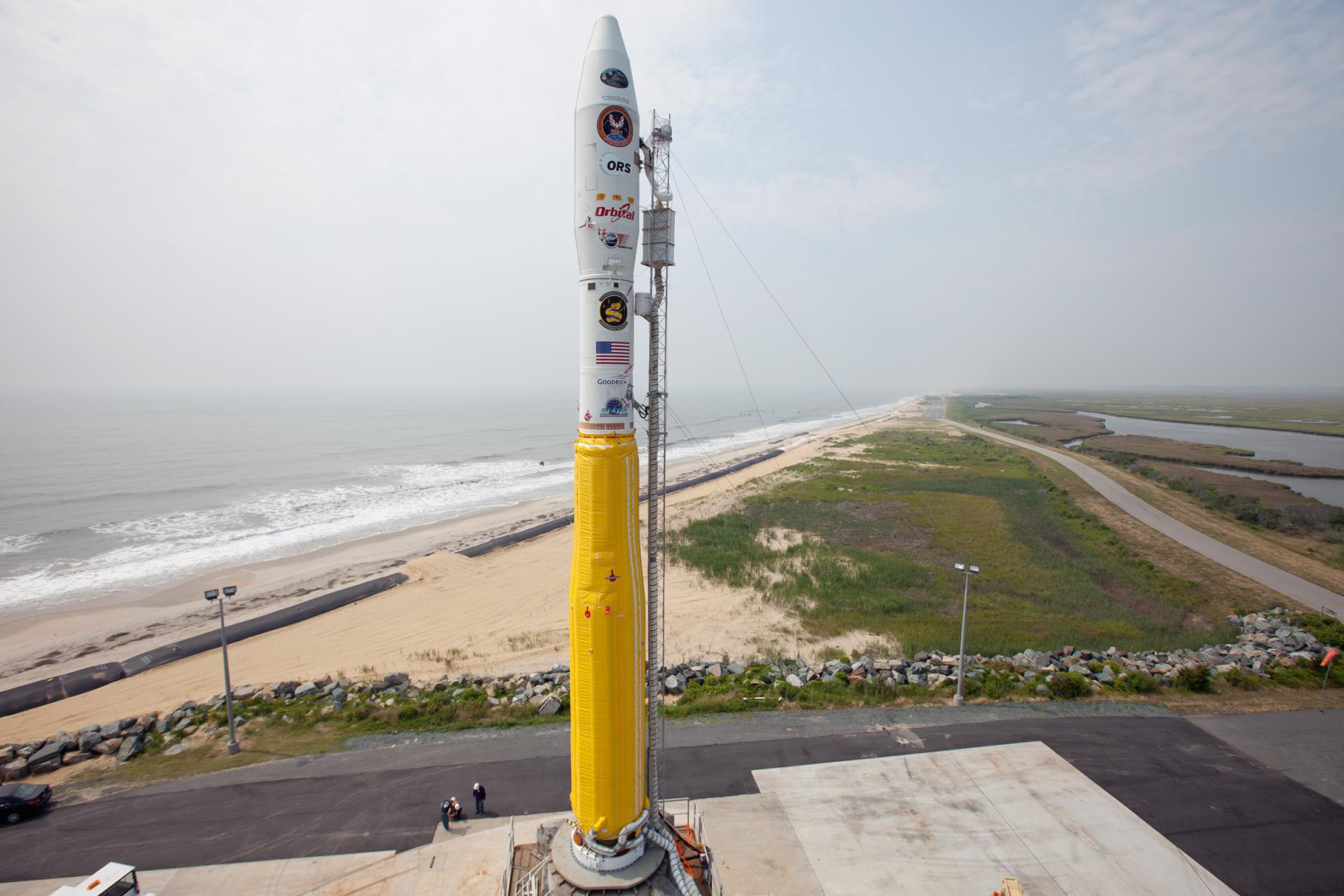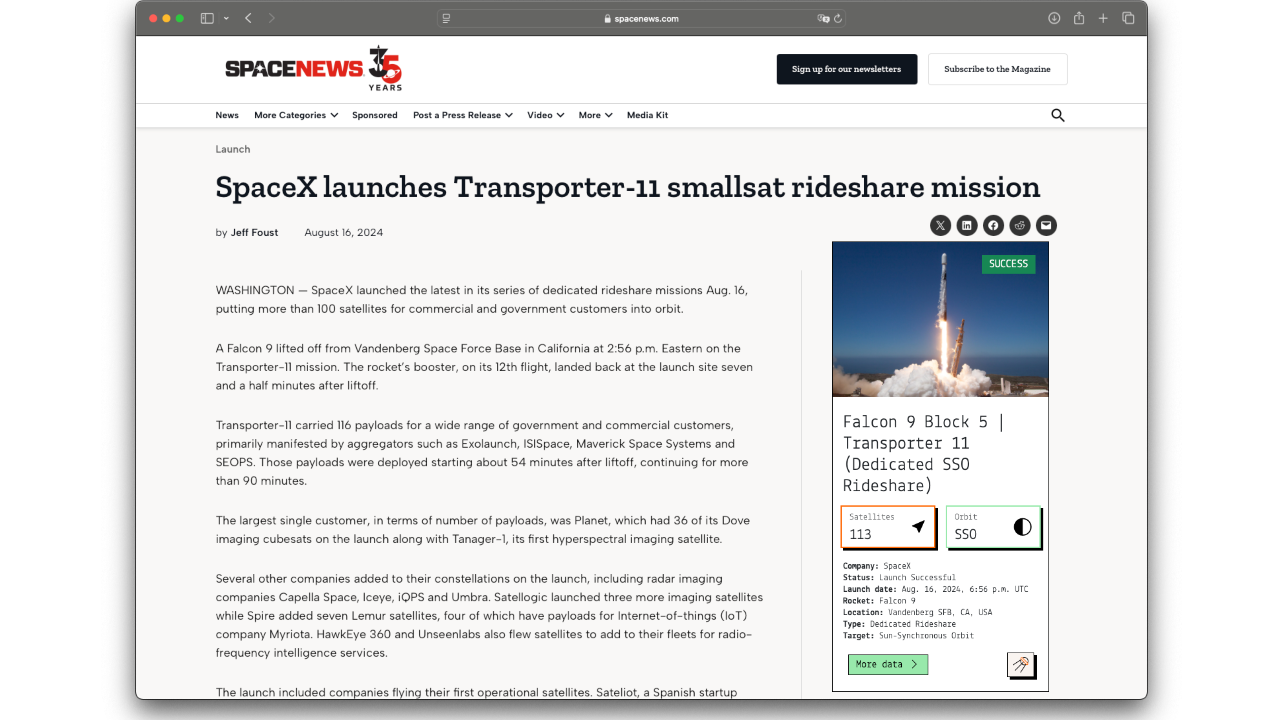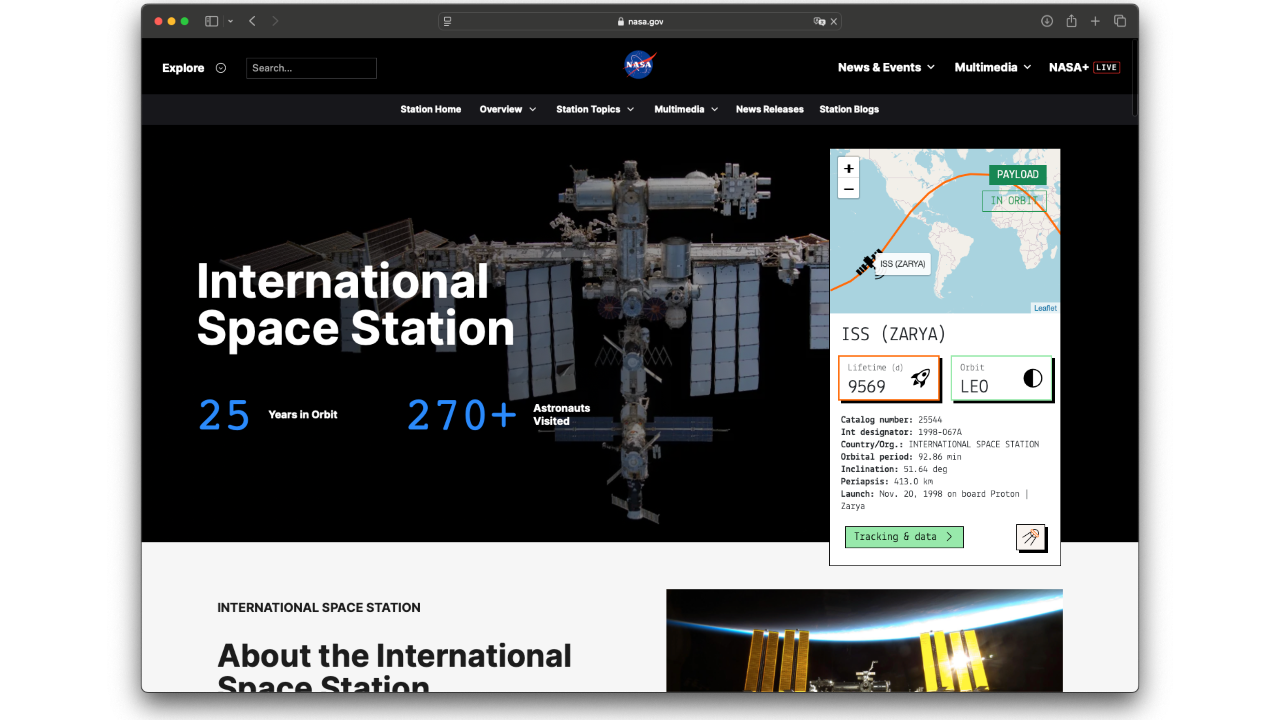Key statistics
Satellite PICOSAT 5 at a glance.
Uptime
9452
Days in orbit
Revolutions
≈ 14.6
Per day
Orbit
SSO
Sun Synchronous Orbit
Inclination
100.2
Latest
Satellite identification and parameters
Extended collection of information and parameters for PICOSAT 5.
Object identification
Identified? True
Debris? False
Object name: PICOSAT 5
International designator: 2000-004L
Object number (NORAD): 26093
Object ID (CCSDS): 26093
Country: UNITED STATES OF AMERICA (US)
Current information (Y/N): Y
RCS size: SMALL
Orbital parameters
Period: 98.368 minutes
Inclination: 100.1763 deg
SMA: 7058.768 km
Apoapsis: 697.667 km
Periapsis: 663.598 km
RAAN: 84.8293 deg
Eccentricy: 0.00241323
Argument of periapsis: 50.3703 deg
Mean anomaly: 309.9617 deg
Mean motion: 14.63893373 rev/day
Mean motion (dot): 0.00005434 rev/day2
B* drag term: 0.0010475061 1/REarth
Two-line elements (TLE)
Creation date: Dec. 12, 2025, 10:14 a.m.
Reference frame: TEME
Reference center: EARTH
Epoch: Dec. 12, 2025, 5:51 a.m. UTC
TLE line 0: 0 PICOSAT 5
TLE line 1: 1 26093U 00004L 25346.24416833 .00005434 00000-0 10475-2 0 9990
TLE line 2: 2 26093 100.1763 84.8293 0024132 50.3703 309.9617 14.63893373365088
Live tracking on map
Real-time ground track for satellite PICOSAT 5.
In-orbit conjunctions
A list of the most updated potential collisions computed for object PICOSAT 5.
Associated space launch
The JAWSAT (Joint Air Force Academy / Weber State University Satellite) project was developed by students working alongside aerospace professionals. Initially designed with a pulsed-plasma thruster to train Air Force Academy cadets (see JAWSAT), the mission has since evolved to include the efforts of several universities, local aerospace companies, the Air Force Academy, the Air Force Research Laboratory, and NASA. Utilizing breakthrough technologies, JAWSAT deployed four satellites when it reached orbit. The onboard imaging system recorded the deployment of each payload with its six digital cameras. The first free-flying Academy satellite, FalconSat-1 carried the CHAWS (Charging Hazards and Wake Studies) experiment developed by the Physics Department at the Academy.
PICOSAT 5 was lifted into orbit during the mission ‘Minotaur I | JAWSAT & FalconSat 1’, on board a Minotaur I space rocket.
The launch took place on Jan. 27, 2000, 3:03 a.m. from Space Launch Complex 8.
For more information about the launch, click the button.

Minotaur I | JAWSAT & FalconSat 1
Agency: N/A
Status: Launch Successful
Launch date: Jan. 27, 2000, 3:03 a.m. UTC
Rocket: Minotaur I
Launch pad: Space Launch Complex 8
Location: Vandenberg SFB, CA, USA
...
Latest news about this satellite
There are no fresh news available about this satellite. Check back as we update our databases every day.
Newsletter sign-up
Weekly statistics, charts and insights to help you stay on top of the space industry.




